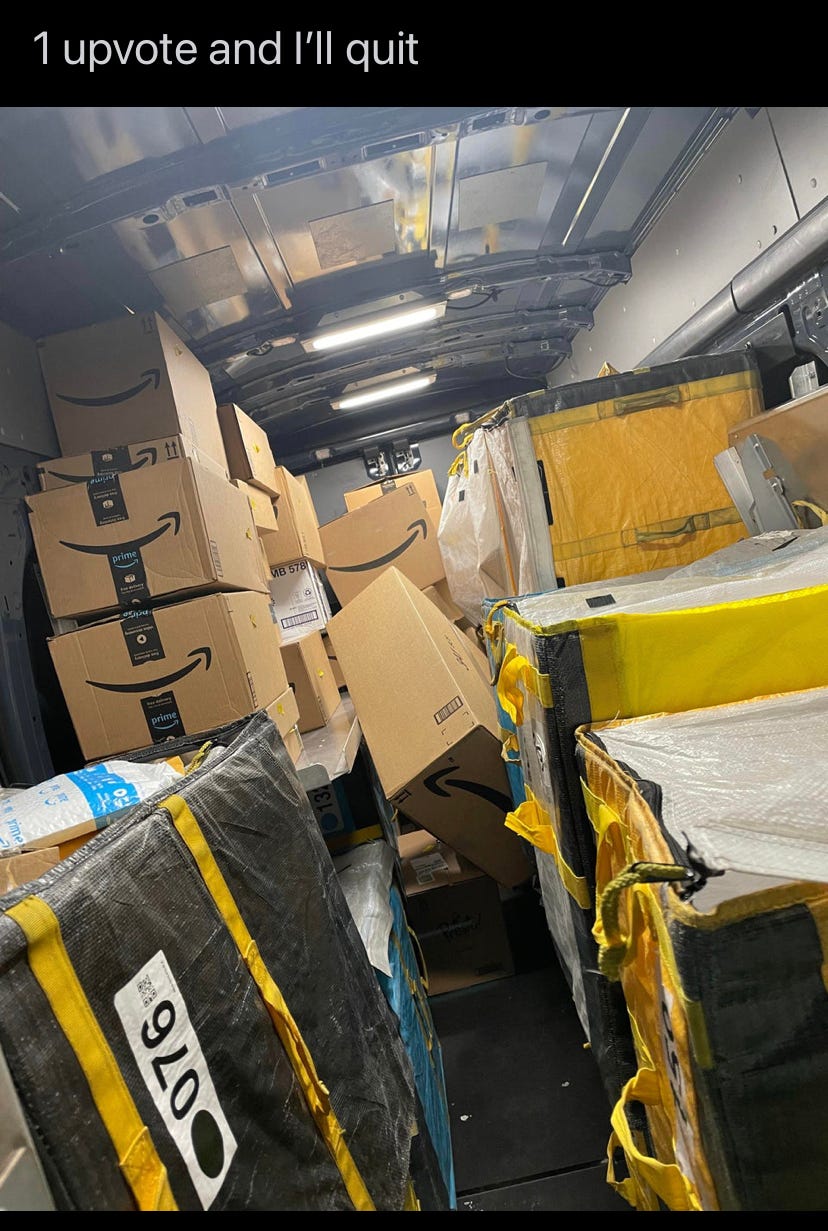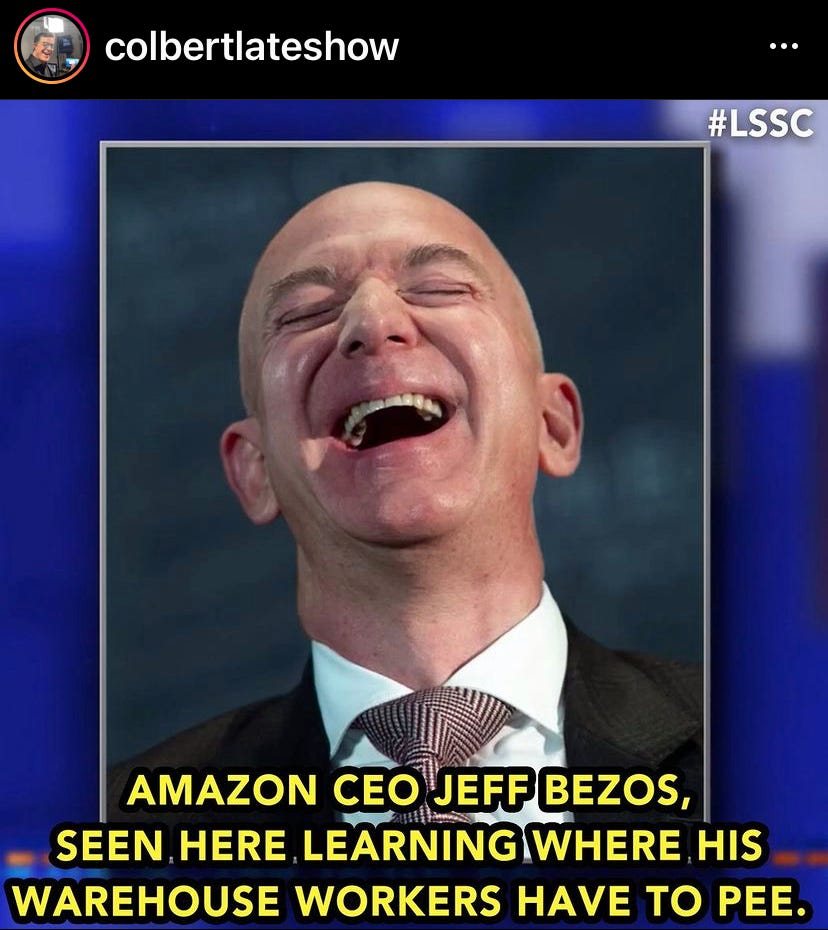Amazon doesn't know the difference between its corporate and hourly workforce
When Mark Zuckerberg coined the tech-industry motto: “Move fast and break things,” he wasn't talking about torn ligaments and herniated disks.

Jeff Bezos has never denied that Amazon is a tough gig.
"It's not easy to work here," the company's founder and CEO famously wrote in a letter to shareholders more than two decades ago. "You can work long, hard or smart, but at Amazon.com you can't choose two out of three."
Bezos has long exalted Amazon's workers as elite, an army of tireless tech ninjas who can make quick reality of grand ideas.
Amazon is exceptional. But its greatest distinction isn’t its breakneck work ethic — it’s that it counts among its ranks two kinds of workers: well-paid execs, software engineers, marketers, scientists and lawyers on its corporate campuses and manual laborers, paid by the hour, toiling across thousands of warehouses.
When it comes to its workforce, Amazon more resembles General Motors or Ford than it does Apple or Microsoft.
There's a big difference between white- and blue-collar work. Yet, Amazon has long enforced its hard-driving corporate philosophy on both.
Amazon's warehouse workers say they skip bathroom breaks to meet performance expectations. Delivery drivers urinate in Gatorade bottles so they can finish their routes on time. And the pace at which Amazon pushes its warehouse crews recently drew a fine from regulators in its home state of Washington.
The company, by its own count, had more than 14,000 serious injuries in 2019, according to one report. That’s almost twice the industry average.
When Meta CEO Mark Zuckerberg coined the tech-industry motto “Move fast and break things,” I doubt he was talking about torn ligaments and herniated disks.
Operating its warehouses at a safer and more sustainable pace isn’t just good for workers, it’s good for Amazon’s reputation and its long-term interests.
True, Amazon pays its blue-collar workers at least twice the federal minimum wage. It also provides low-skill jobs in communities that need them most.
But it's also clear many of Amazon’s drivers and warehouse workers simply can't keep up.
As a result, its logistics operations are under more scrutiny than ever, its blue-collar workers are quitting in droves and unions are increasingly threatening the company’s business model.
Amazon’s turbocharged corporate culture has taken its toll on its white-collar workers as well. Employees cry at their desks, cracking under a Darwinian corporate culture designed to burn through all but the fittest employees, The New York Times has reported.
In an extreme example of the pressures Amazon workers face, an Amazon employee survived a leap off the South Lake Union campus's 12-story Apollo building in 2016 after he’d been put on a performance improvement plan.
Suicide attempts notwithstanding, nobody’s losing much sleep over a bunch of software engineers and execs pushed to the brink. They’re pulling in fat checks and obscene stock options. They're educated and in high demand. Should Amazon’s pressure cooker prove too much, these people can find jobs anywhere.
Not so when it comes to Amazon’s drivers and warehouse crews. They earn barely enough to get by in most large U.S. cities. They face narrower job options. And every day brings risk of injury — often followed by financial ruin.
A company seen as leaning unrealistically hard its blue-collar workforce doesn't evoke ambition and innovation so much as the workers’ rights battles of the 19th century.
Amazon doesn't seem to get this, and that's why it’s on the defensive when it comes to its warehouse workers.
Legend has it that Dave Clark — who helped invent Amazon's logistics operations and is now the company's second in command — earned the nickname "The Sniper" after lurking in warehouses and singling out slow or distracted workers to be fired.
When was the last time you heard of a senior executive — a multi-millionaire no less — bothering to personally cull his company’s lowest ranks? It's like something out of an Upton Sinclair novel.
Even before the pandemic, Amazon’s U.S. logistics workforce was bleeding out at a rate of 3% each week, according to The New York Times. That means Amazon's hourly workforce is turning over at a rate of 150% a year. The company is burning through so many warehouse workers, some of its executives worry it will run out of Americans to hire, The Times said.
It’s no secret Amazon’s warehouse crews and drivers are a temporary solution to a problem its engineers have yet to solve.
The company can deploy millions of lines of computer code that categorize, collect, track and guide merchandise to its intended destination. Amazon has poured vast amounts of capital into designing, building and buying robotics that promise to automate virtually every step of the delivery process.
For now, it still needs human muscle to accomplish the so-called “last mile” of the delivery process — that is, loading up boxes and packages and tossing them on porches.
But if Amazon has its way, a day will come when it sheds the vast majority of its manual laborers and replaces them with robots. That day isn’t here yet — and labor unions constitute the biggest credible threat to its arrival.
On Thursday, the International Brotherhood of Teamsters announced a new campaign to organize Amazon's warehouse employees. The decision comes just months after Amazon thwarted an effort to unionize one of its warehouses in Bessemer, Alabama.
Should the Teamsters gain control of Amazon’s warehouses, the union will surely make it much more difficult for Amazon to phase out the humans while it phases in the robots.
If Amazon wants to eventually get rid of its blue-collar workers, it has to, at least for now, treat them as though it wants them to stay.
Get in touch: Feel free to reach me at tlystra@satellitenw.com.



